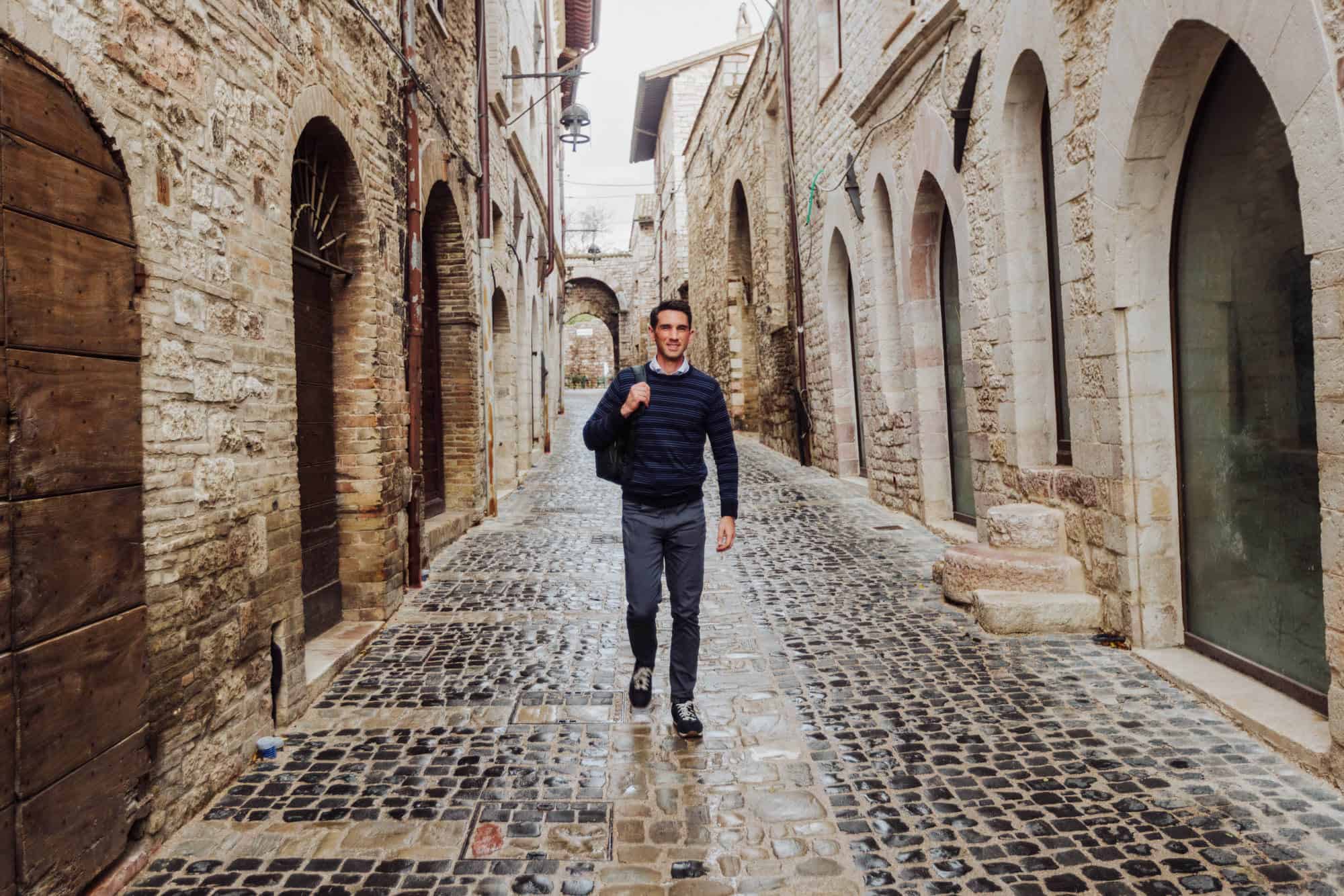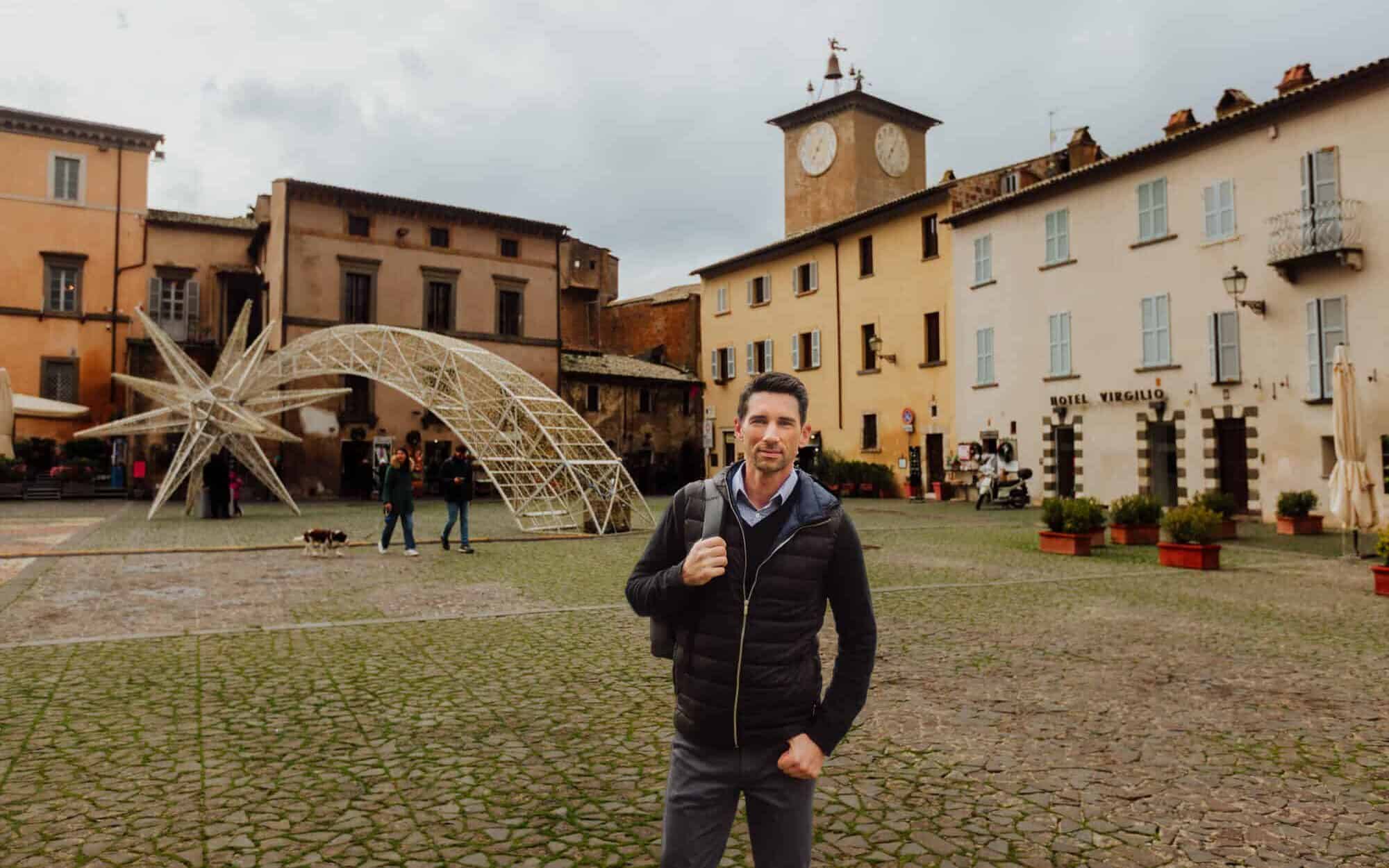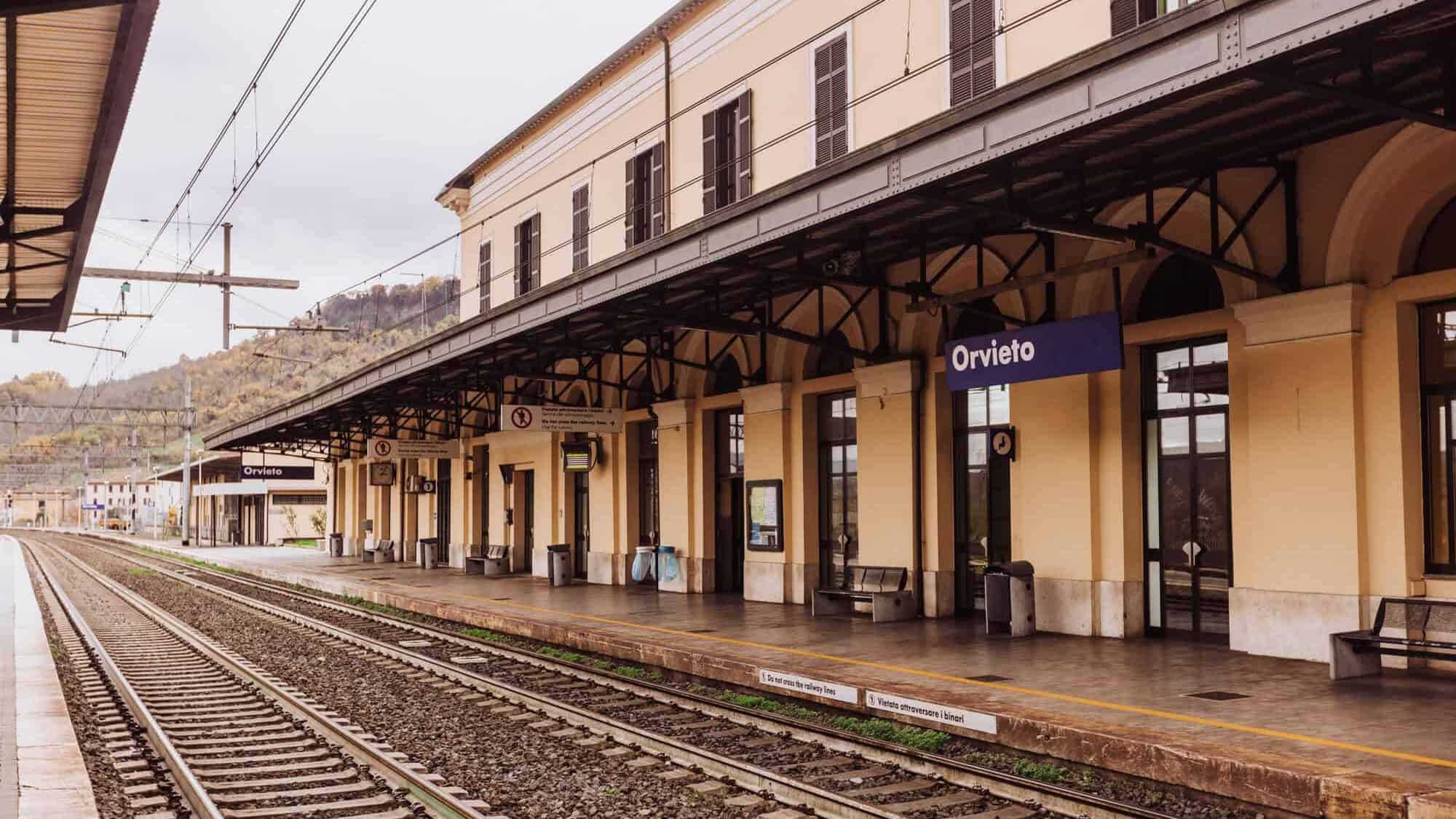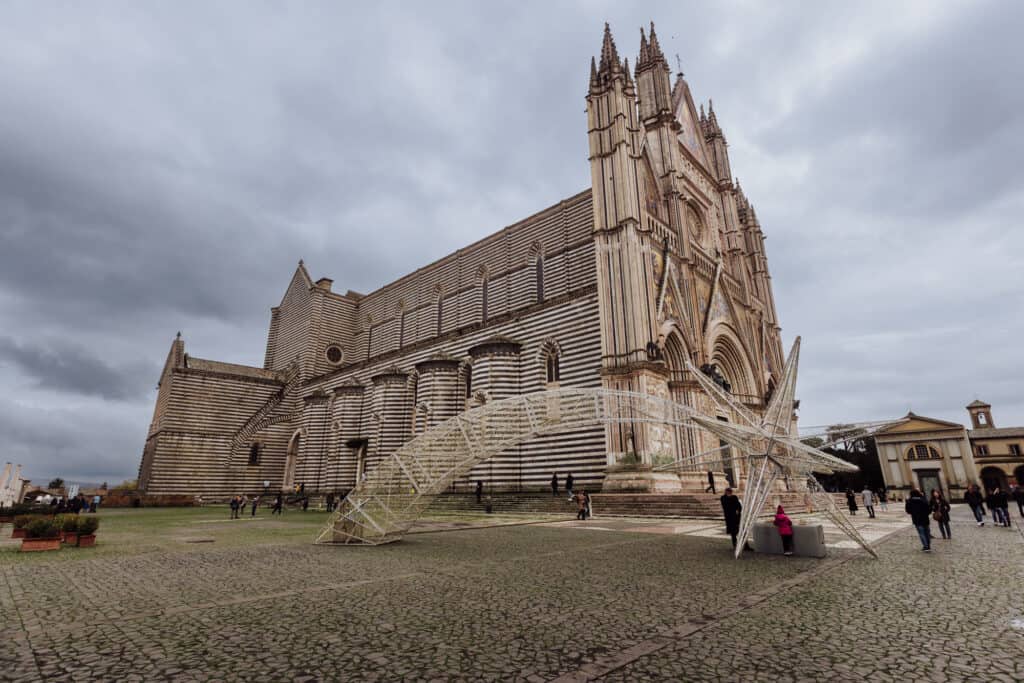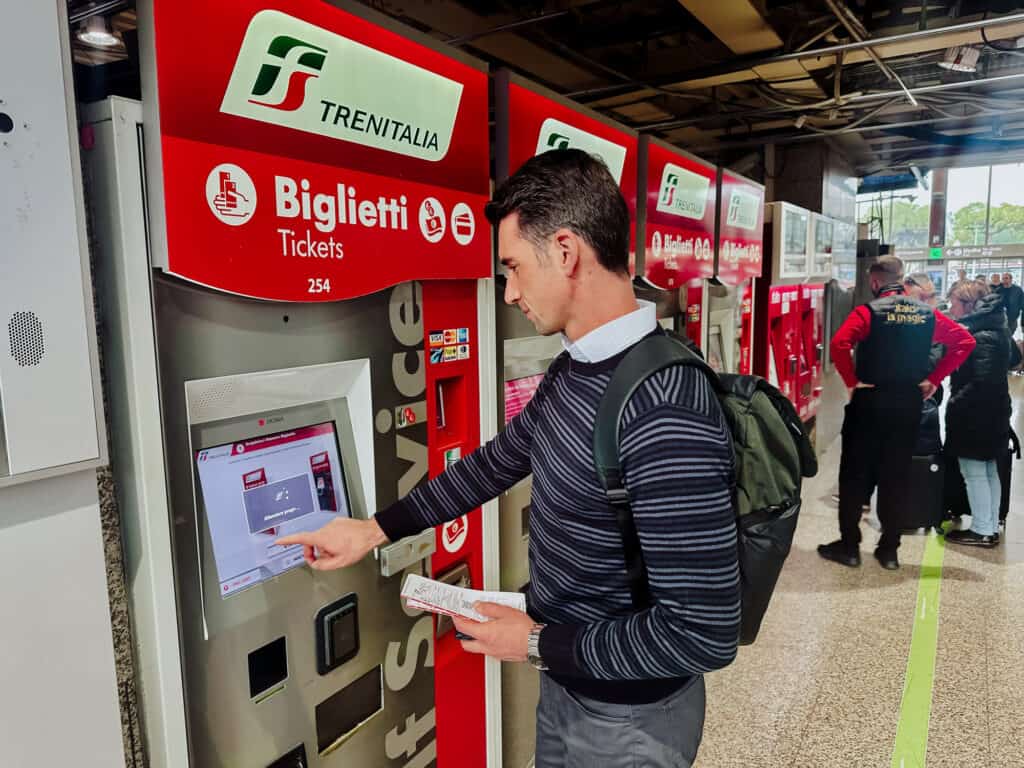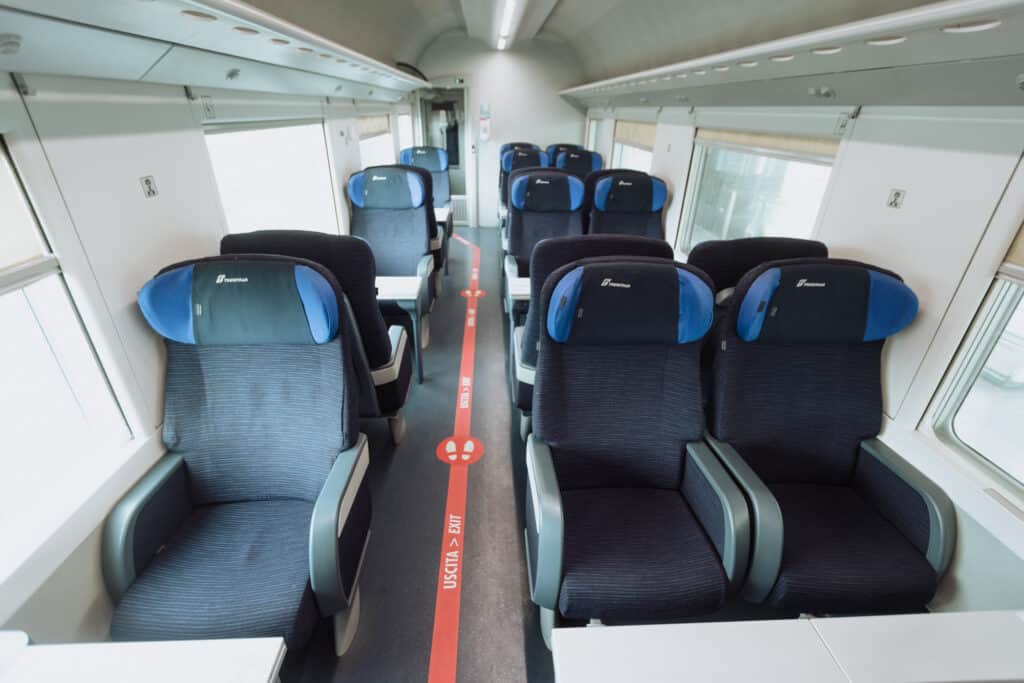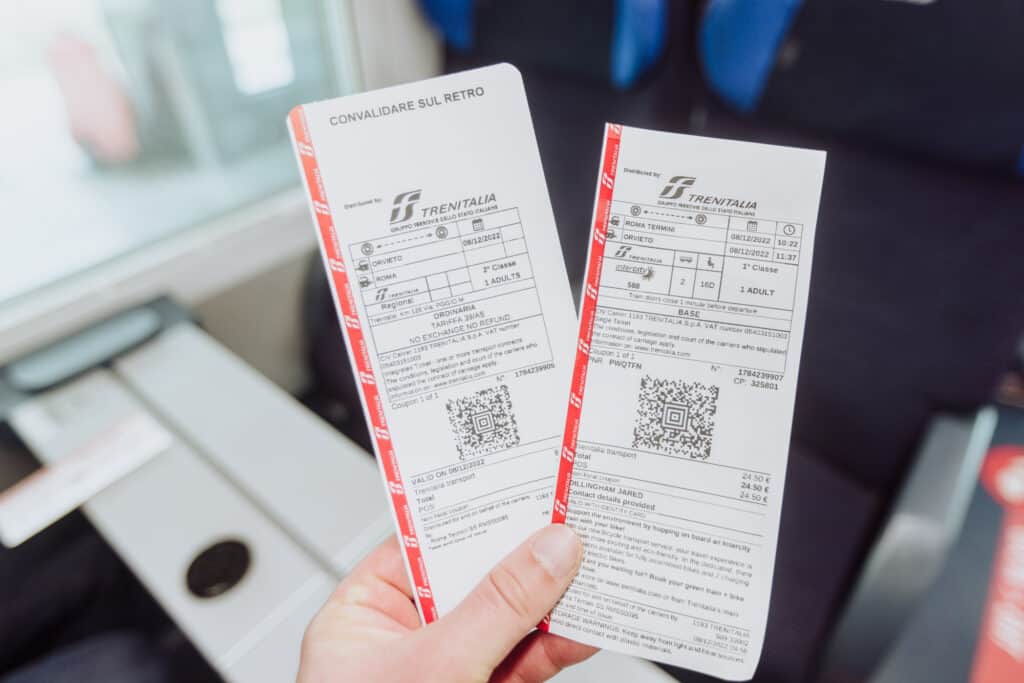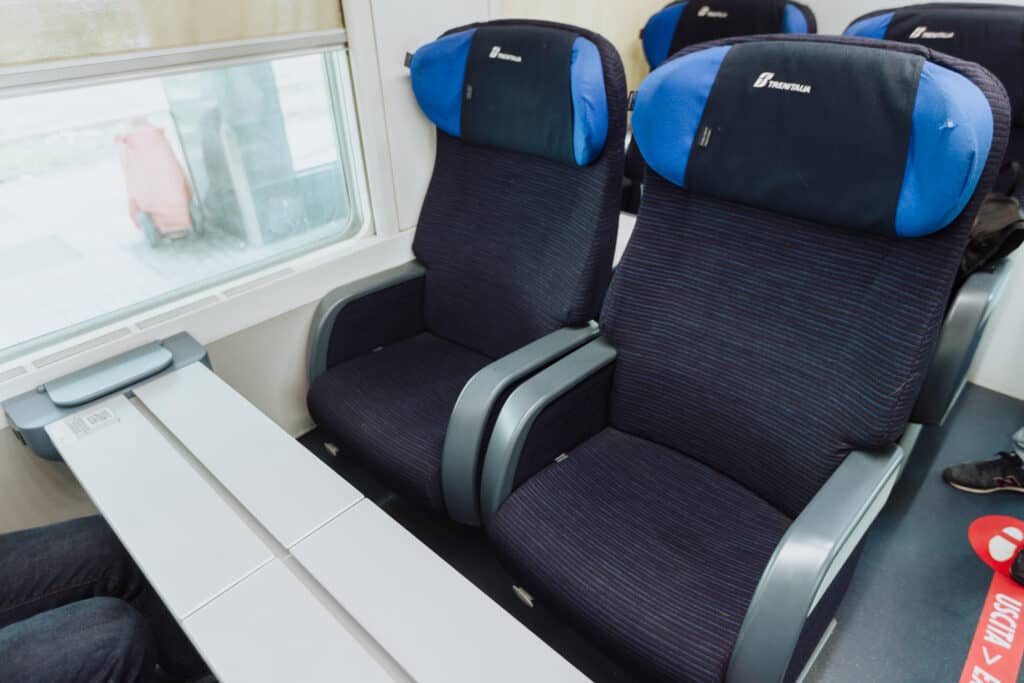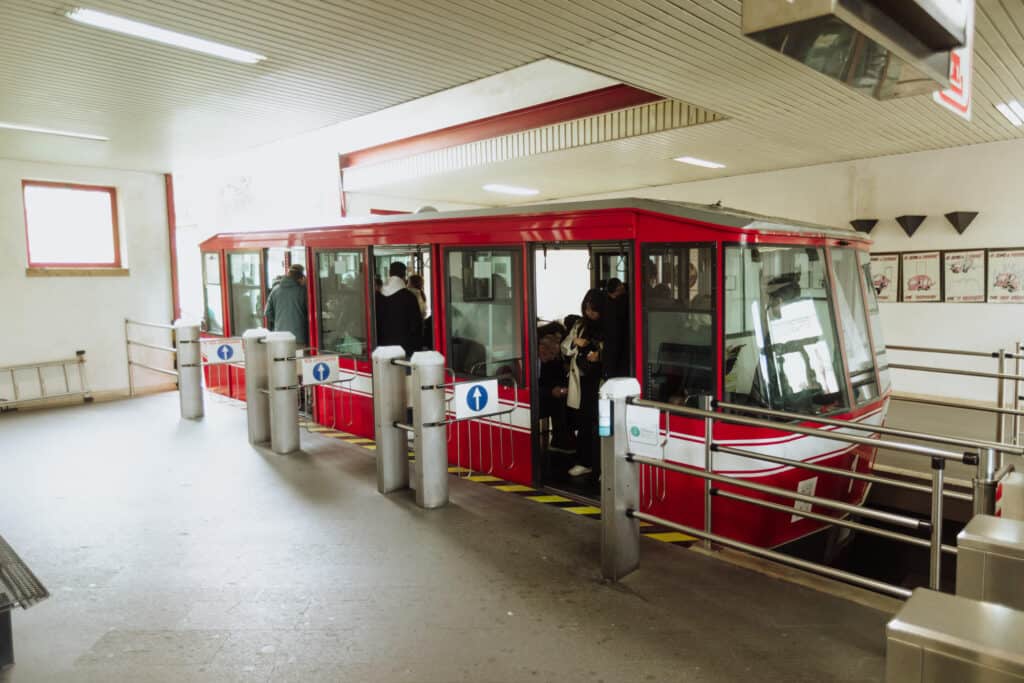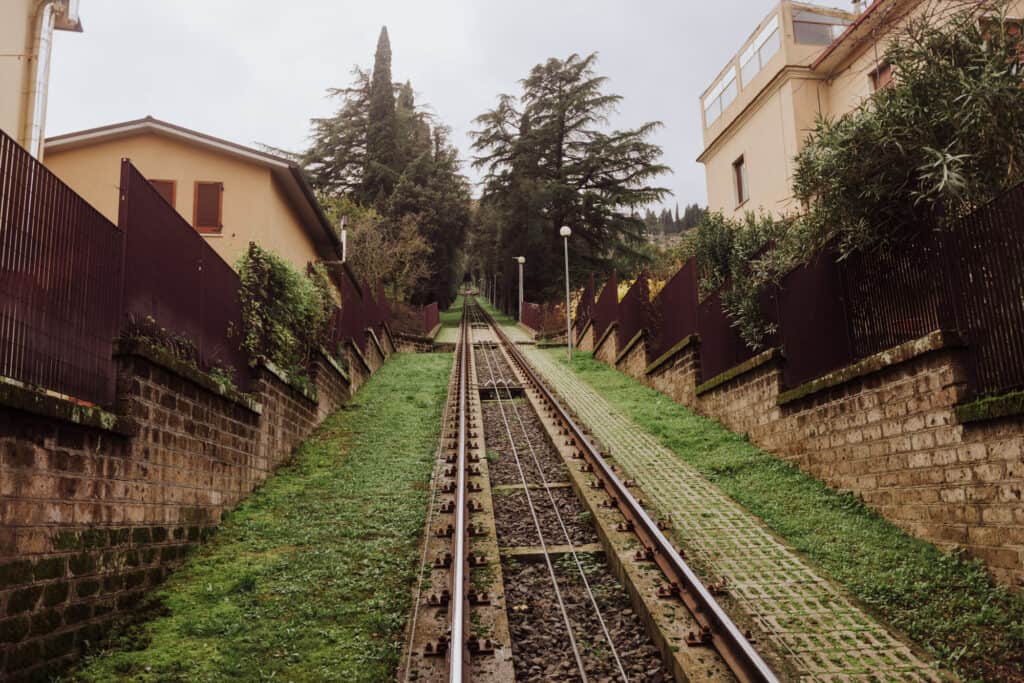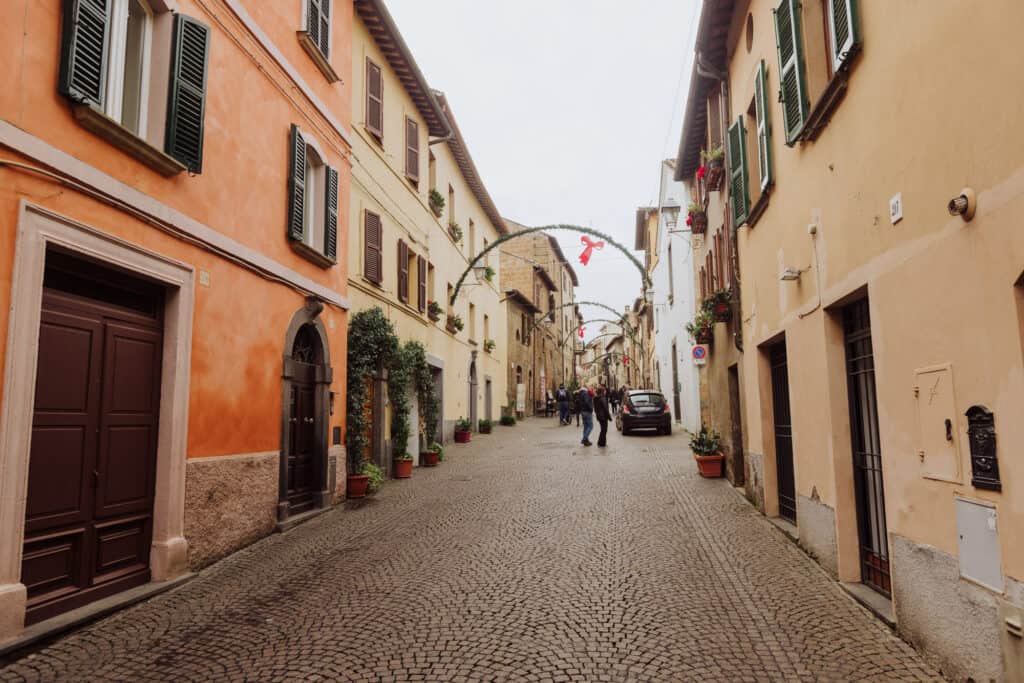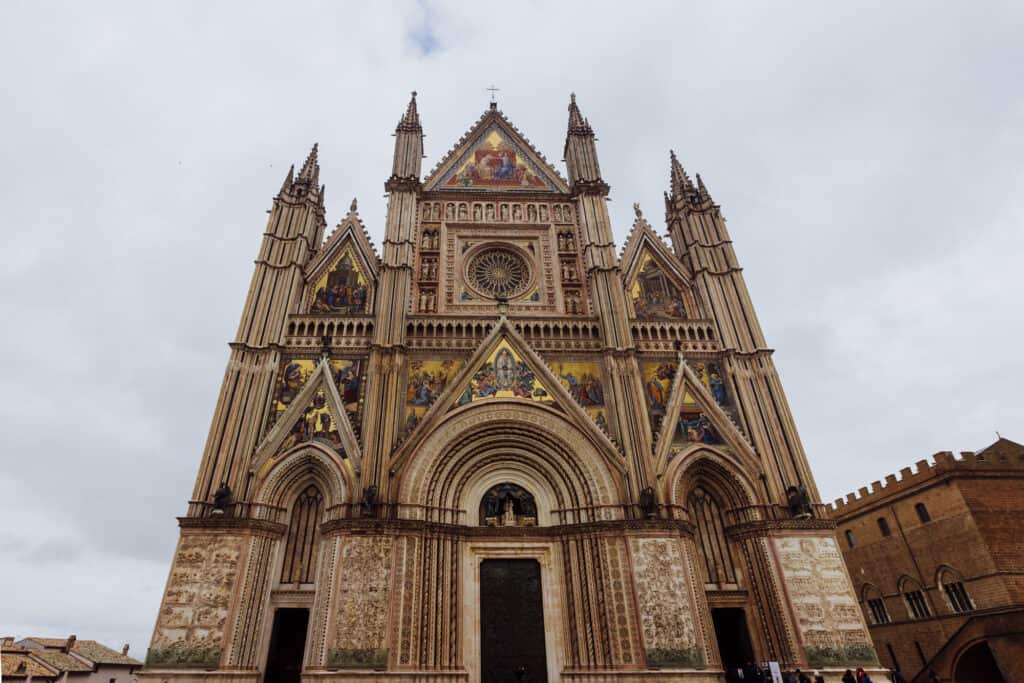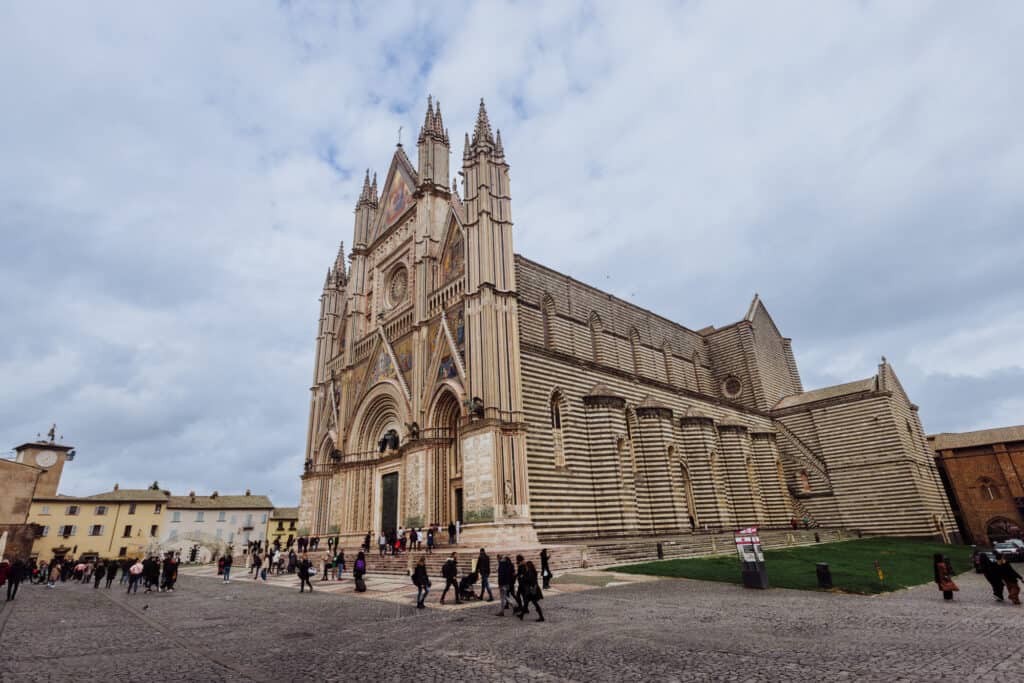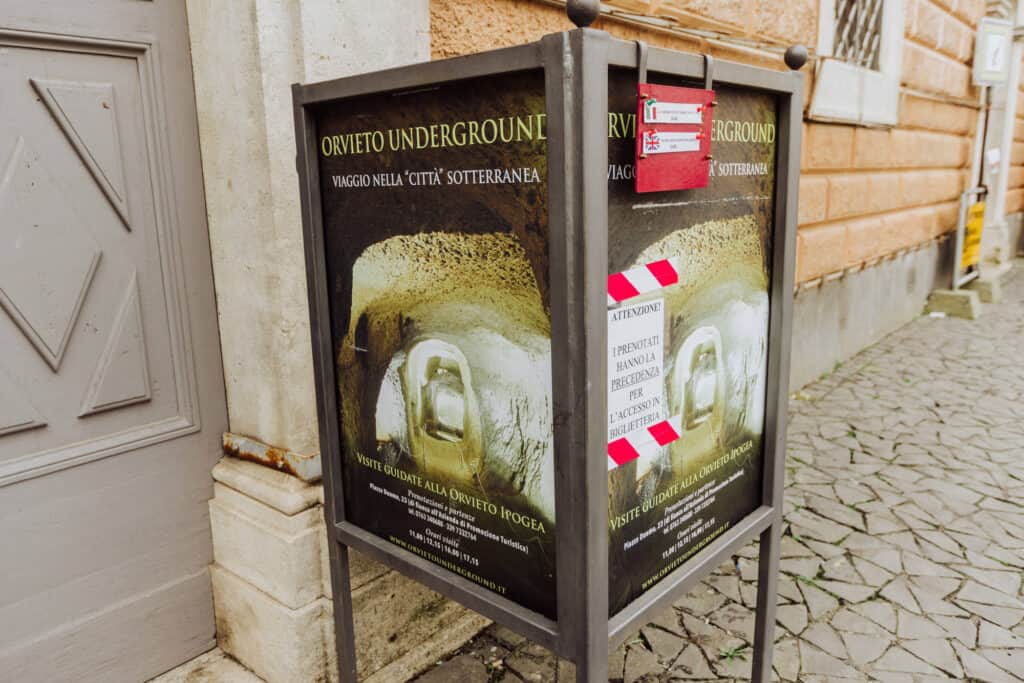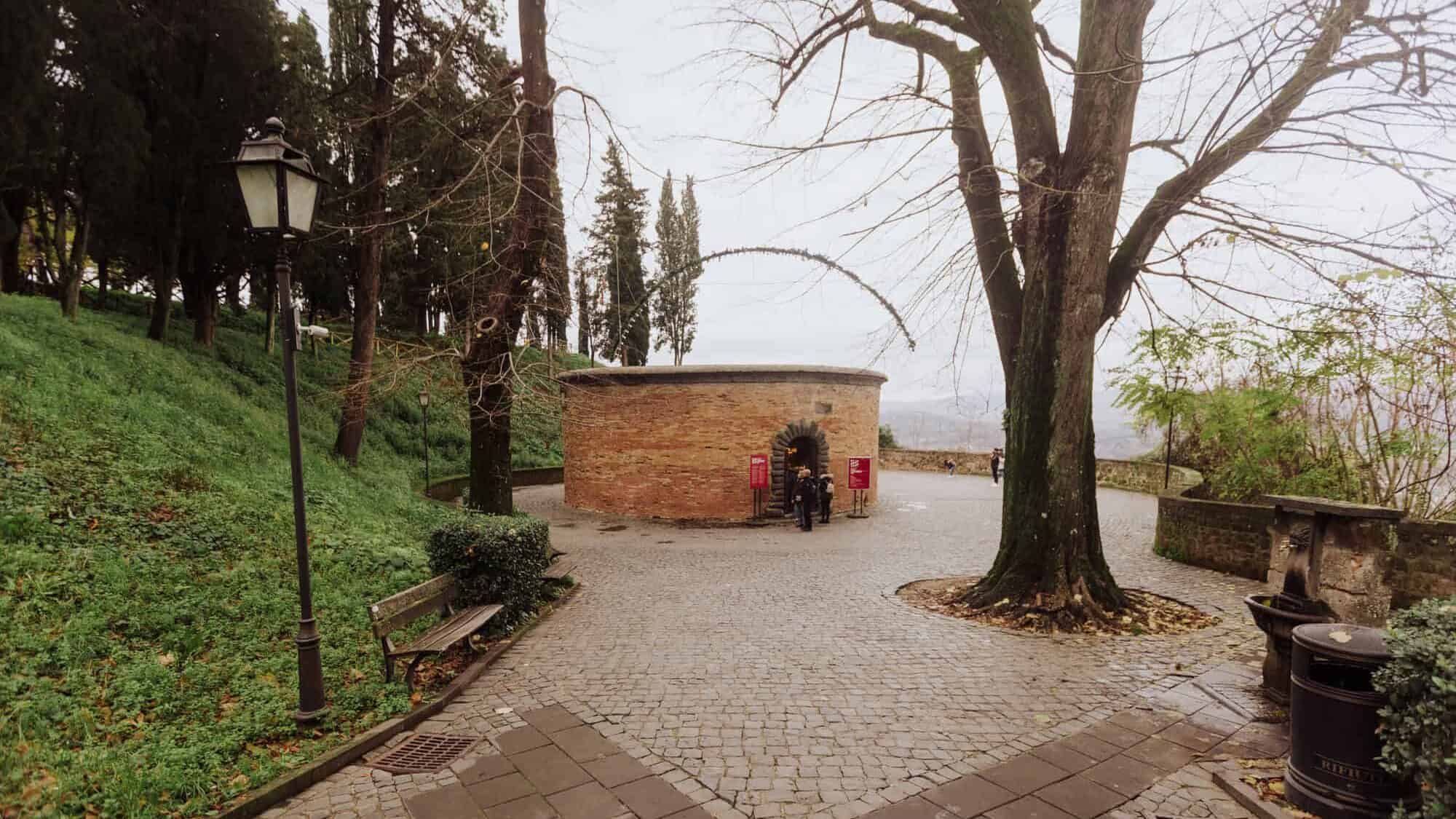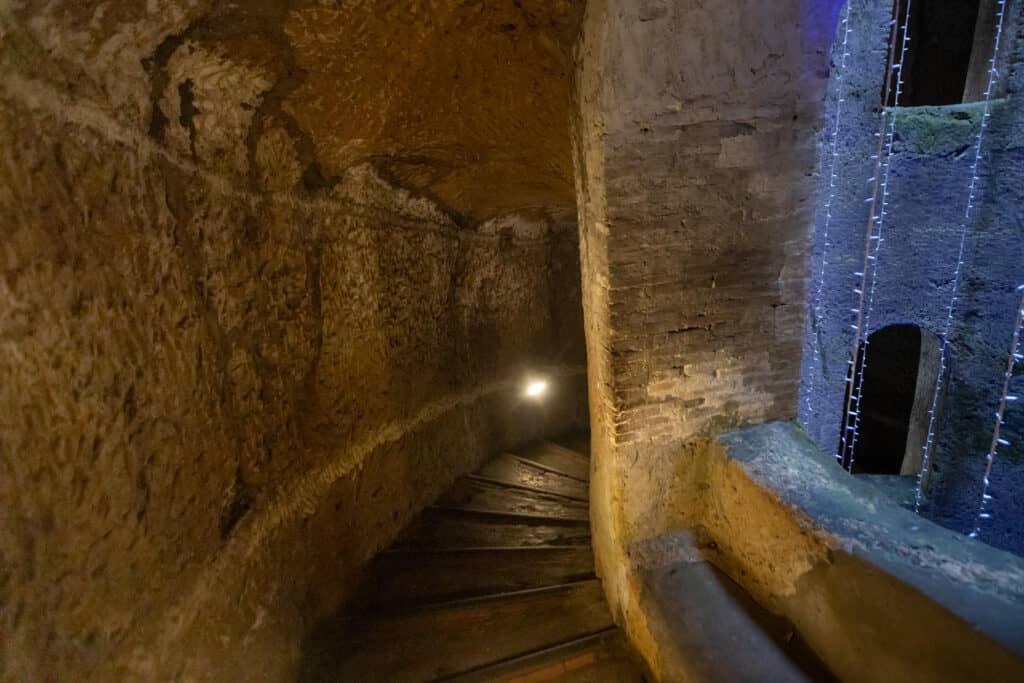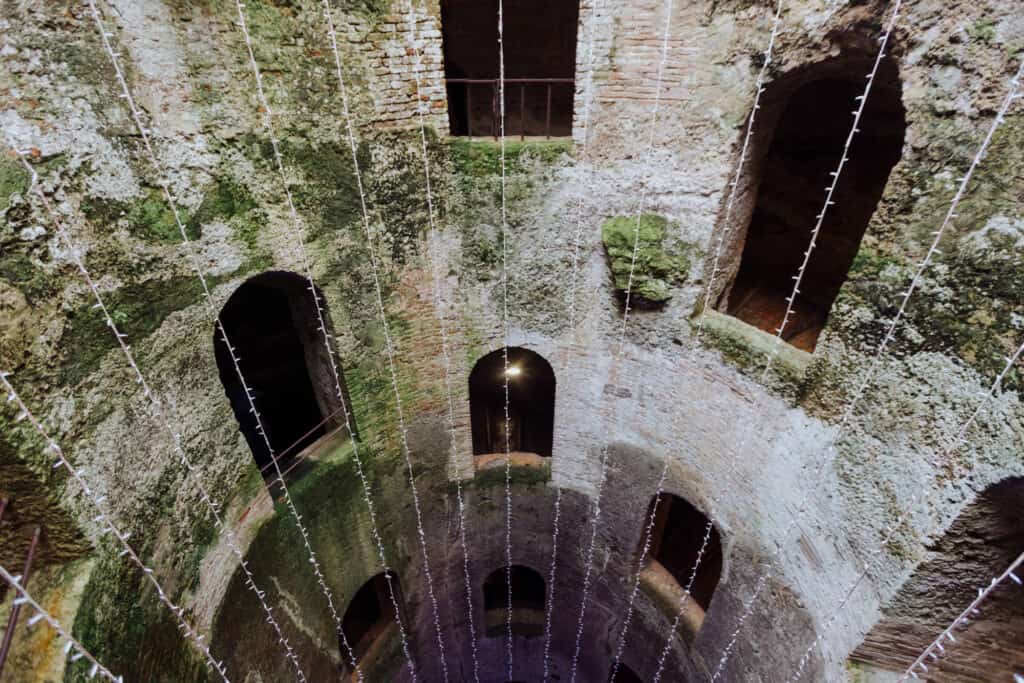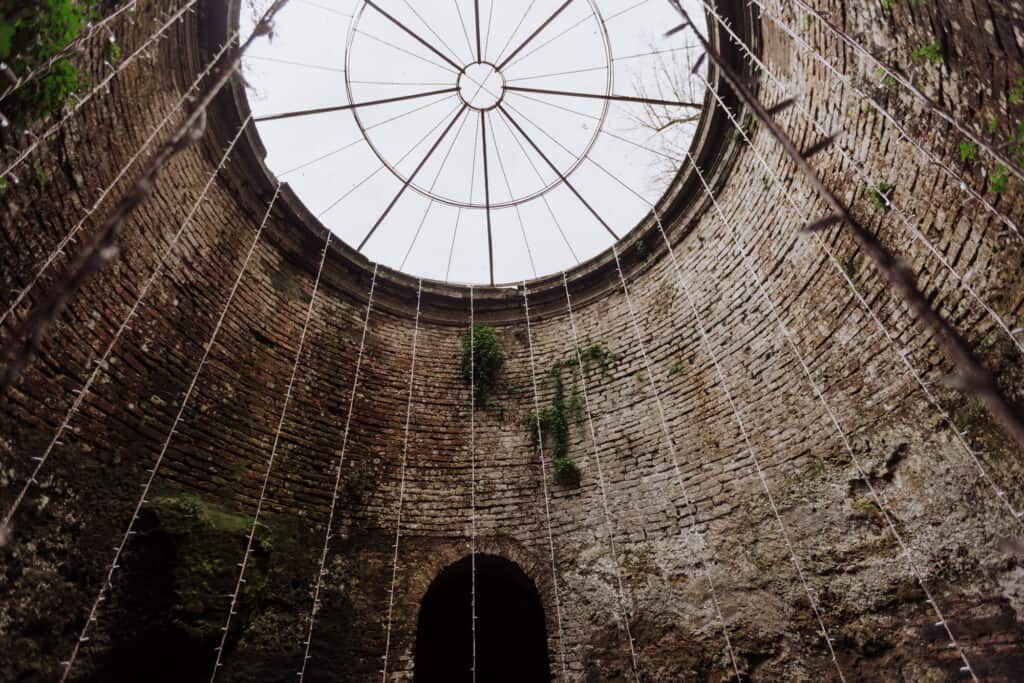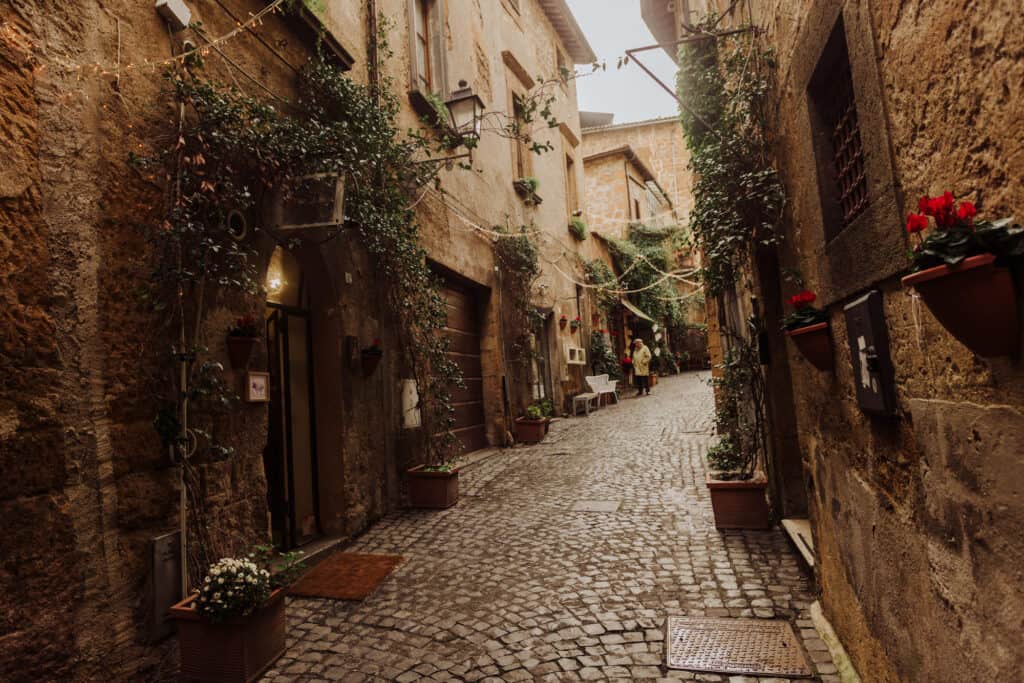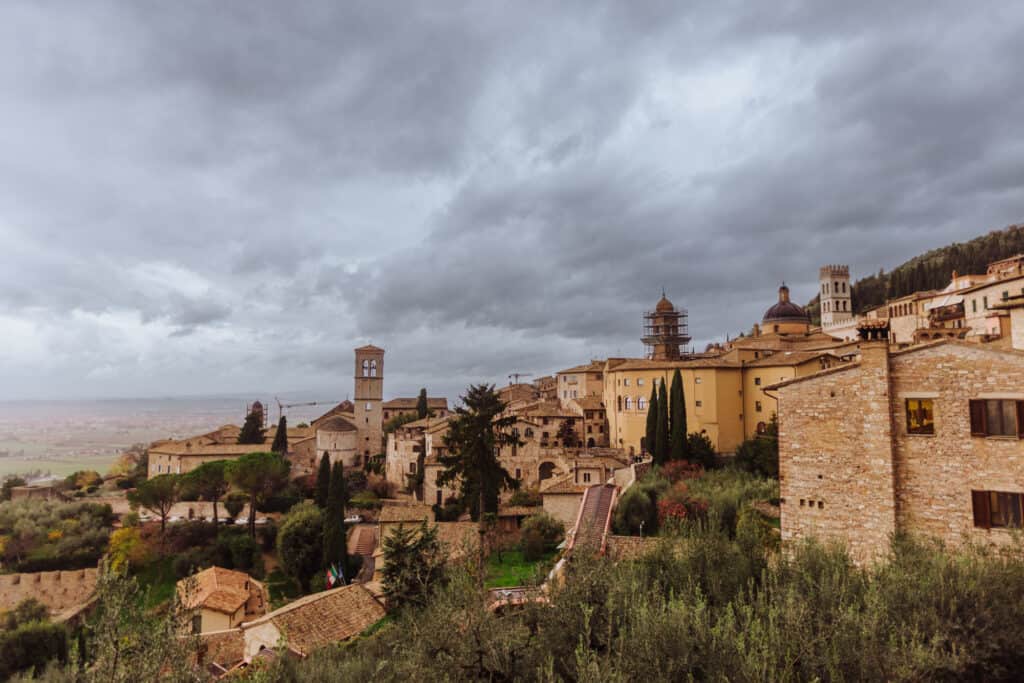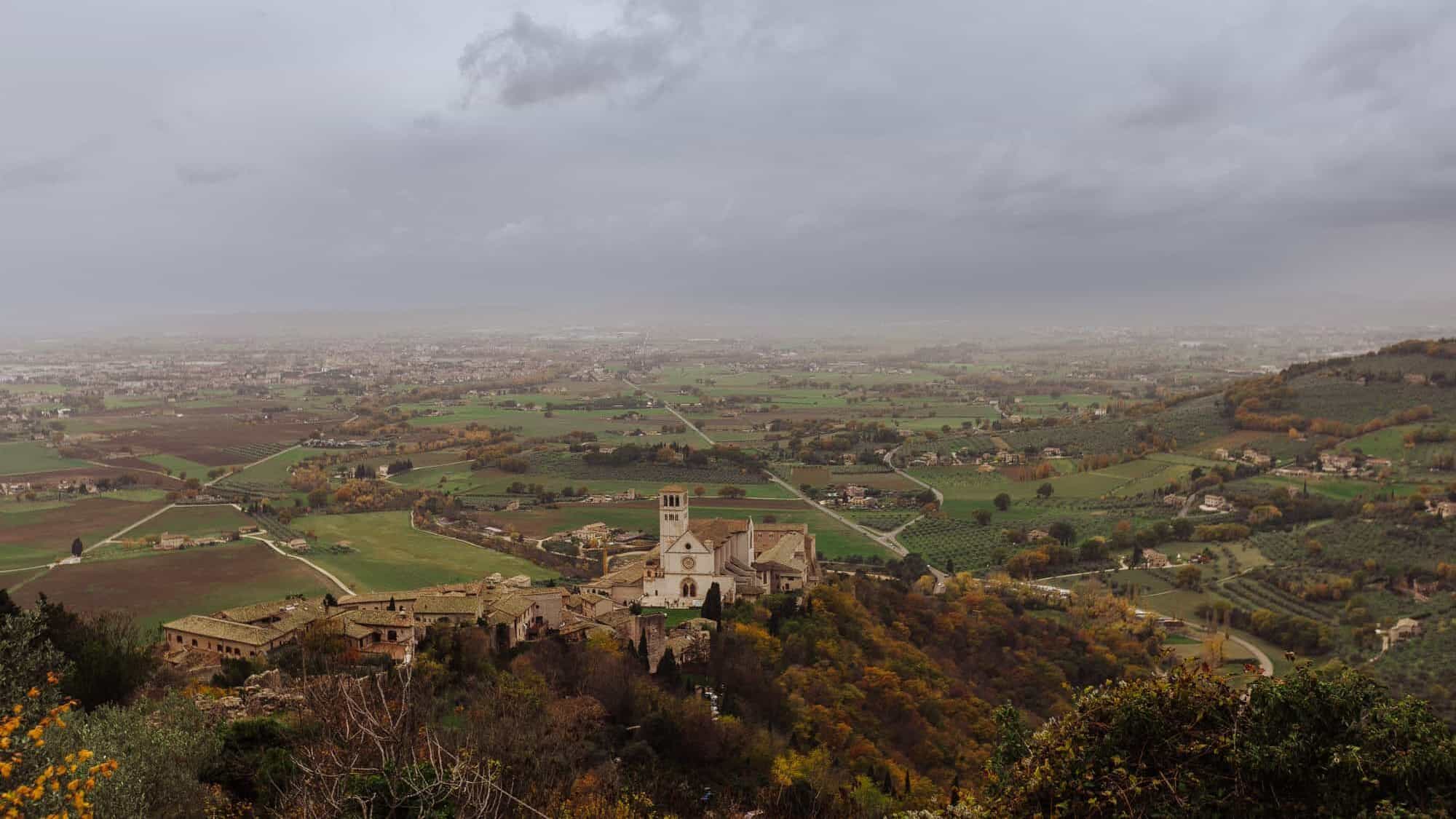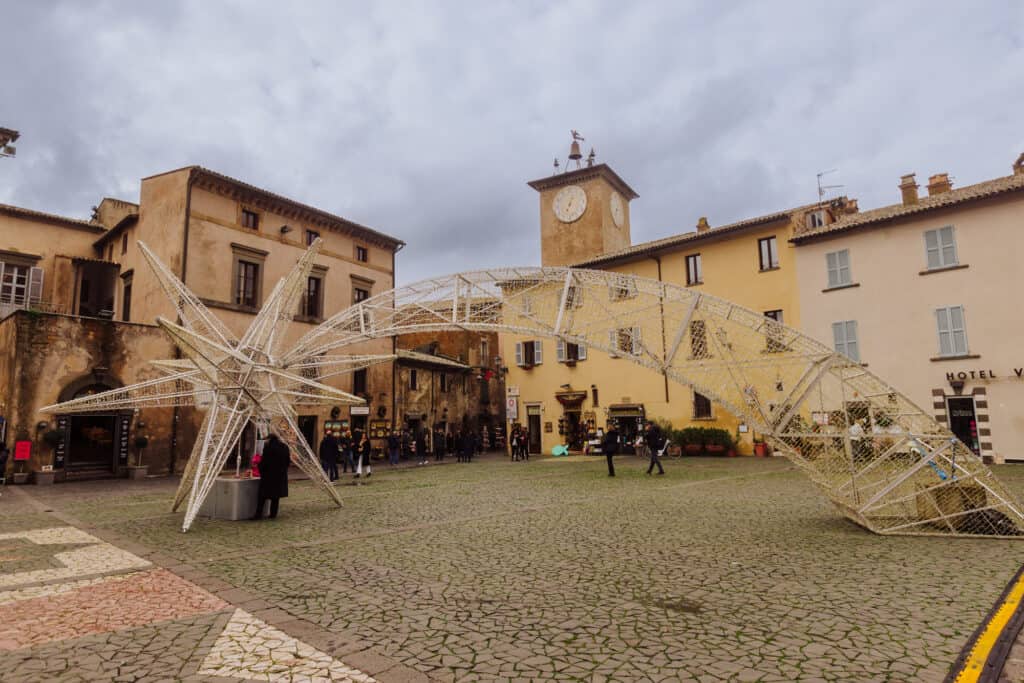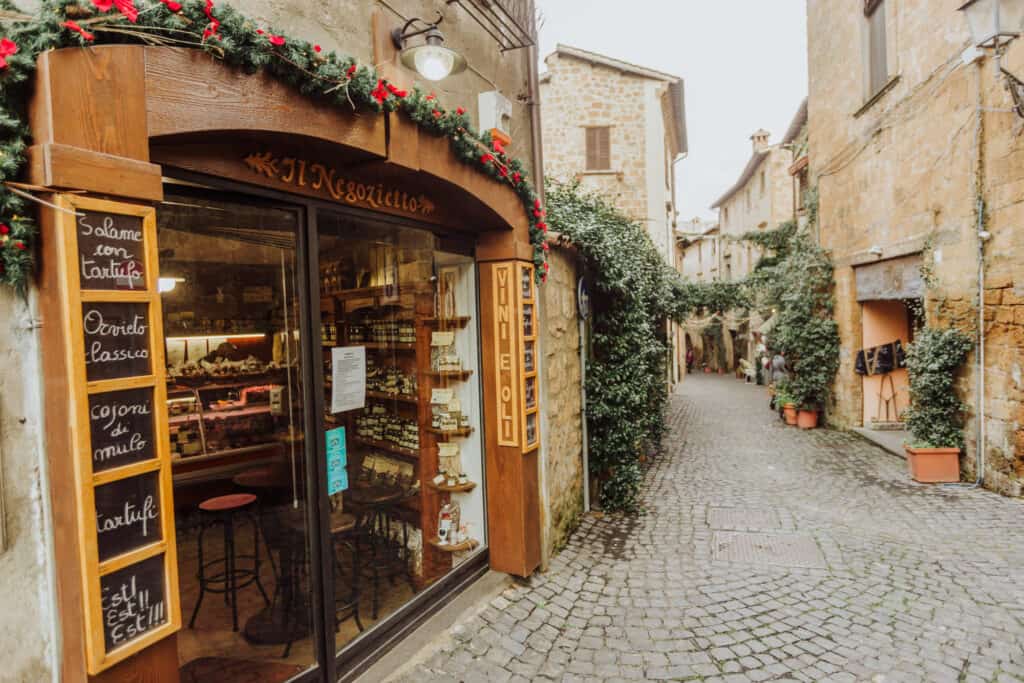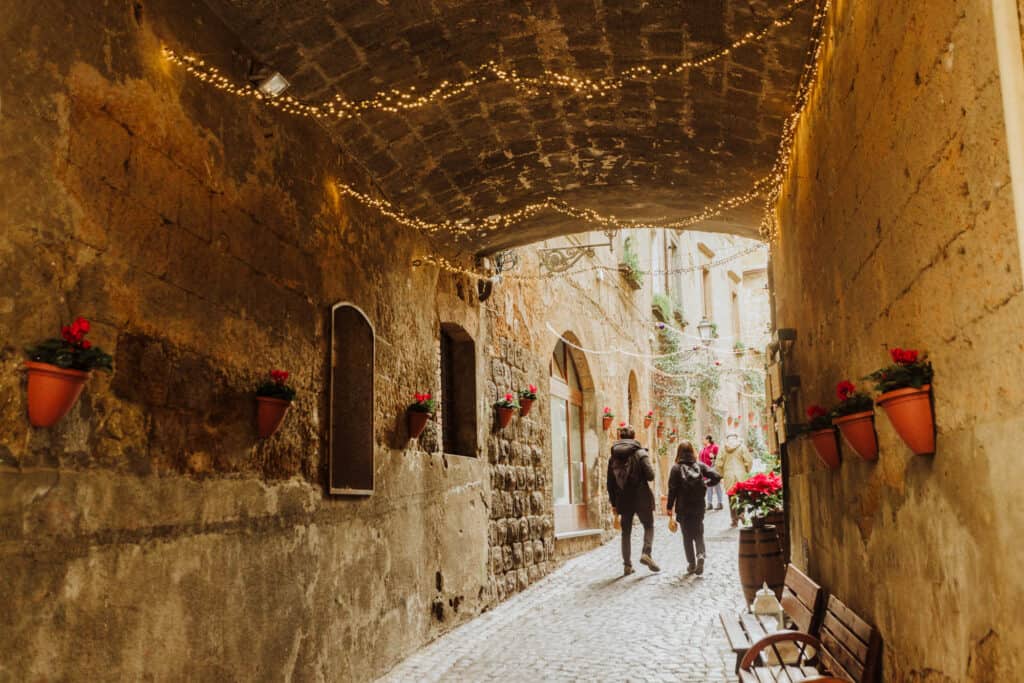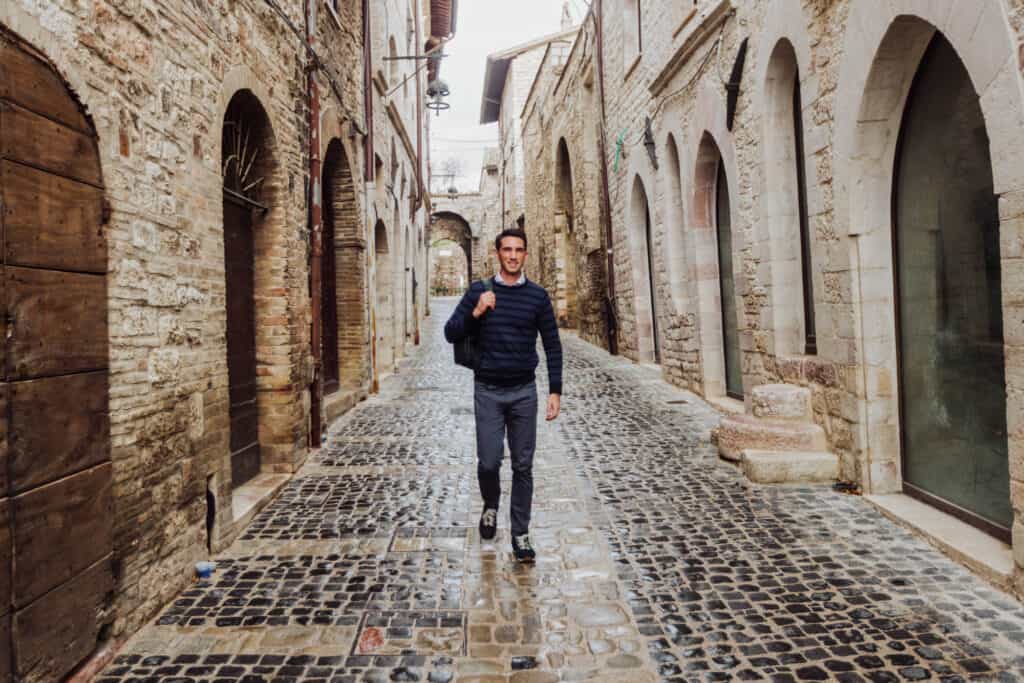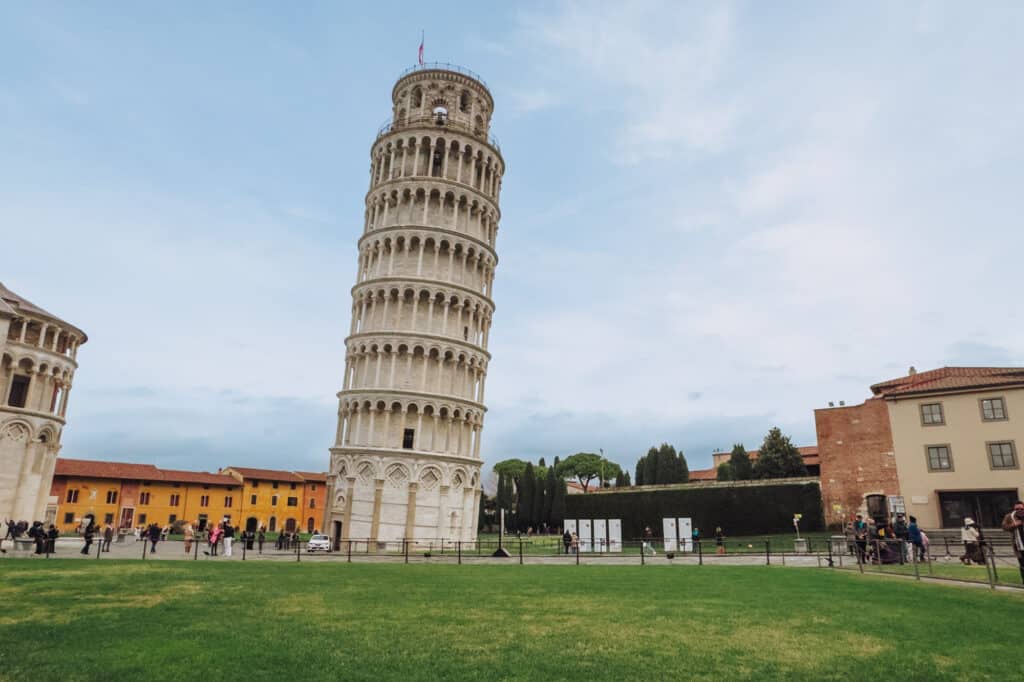Rome to Orvieto: a Day Trip to Italy’s Prettiest Hilltop City
TRAVEL GUIDE: ROME TO ORVIETO, ITALY
A day trip from Rome to Orvieto is a great plan if you’re visiting this part of Italy. As much as Rome has to offer, you’ll enjoy a break from the city as you relax in the Italian countryside and stroll the streets of this hilltop town.
Key Info on a Day trip from Rome to Orvieto
- It takes about 80 minutes to get from Rome to Orvieto on the train.
- From the train station, you’ll have to take a funicular up the mountain to the town!
- Orvieto’s most famous sites include the Duomo di Orvieto (cathedral), St. Patrick’s Well, and a series of underground pathways and caves.
Rome to Orvieto Tours and Guides
If you’re not into figuring out Italy’s train system, or would also like a guide on your day trip to fill you with history and knowledge, there are a number of good tour options.
➡️ Click for Tour: Rome to Orvieto & Civita di Bagnoregio
- This tour has 5-star reviews, and a guide/driver who will take you and your group in a Mercedes minivan from Rome to both Civita di Bagnoregio and Orvieto. It’s wheelchair accessible.
➡️ Click for Tour: Rome to Orvieto & Civita di Bagnoregio
- This is a full-day (9 hour) tour, which picks you up at your hotel in Rome. The driver will take you first to the 2500 year old town of Civita di Bagnoregio, and then on to Orvieto.
Rome to Orvieto by Train
Italy’s train system is fairly easy to use, but it helps to know a few things about it before you arrive at Rome’s busy Roma Termini station. I found it to be just as busy as New York’s Penn Station!
I’ve been using Trainline to book trains in Europe. It’s simple to search, and avoids the kiosks in the train stations. They send you a QR code to your text and email, which you have scanned at the station to board.
➡️ Click to Book Train Tickets in Italy
Otherwise, I would arrive at Roma Termini a minimum of 30 minutes prior to your scheduled departure.
The extra pad time will give you a chance to figure out the Trenitalia ticket kiosks (if you haven’t used them) and also time to walk to your platform. Believe it or not, it might take a good 20 minutes to walk from the ticket kiosk to your train, depending on its track.
Our train left at 10:22, and arrived in Orvieto at 11:37, so it took an hour and 15 minutes.
You’ll be on a regional train, which is clean, but not the speedy futuristic trains heading to destinations farther from Rome.
Train Seats: First Class or “Ordinary Class”
The cost of a train ticket from Rome to Orvieto depends on which class you choose to sit in.
On the outbound train to Orvieto, the cost was 25 Euros for a first class ticket. It dropped to 18 Euros for a second class, which is also called “ordinary class.”
This is a photo of what’s considered first class:
On the regional trains in Italy, the differences between first class and second are minimal. In first class, you might actually get a seat assignment, rather than having to search for a free seat on your own. You’ll also get a small table between the seats. Otherwise, the seats themselves and the legroom are pretty much the same, whether you’re in first class or second class.
Drive from Rome to Orvieto
If you have a rental car and would prefer to drive, it’ll take a bit longer than 90 minutes to get from Rome to Orvieto. It’s a straight shot on a single highway (A1) and it’ll give you the option of stopping at other sites along the way.
As for parking, when you get to Orvieto, you’ll find 10 different lot options on Google Maps to choose from.
The Orvieto Funicular
When your train arrives in Orvieto, you still have to get up the mountain to the town!
The easiest and fastest way is to take the funicular, which is directly across from the train station.
The Orvieto Funicular costs 1.50 Euro, and it’s a short, two-minute ride up. The track is steep up the mountain, but the car goes very slowly up and down.
The funicular cars run every 15 minutes or so up to Orvieto. On busy days, you’ll likely have to wait in a line. They do pack people in, so prepare for an uncomfortable ride up and down. Just remember: it’s brief!
You can also hike up the mountain, which we would have done if we’d arrived earlier.
Hotels in Orvieto
While the focus of this blog is a Rome to Orvieto day trip, of course you could spend much more time relaxing in this part of Umbria. If you’re on a road trip, Orvieto might be a great place to spend the night!
You can plug your dates into this interactive map to check rates and availability for your trip:
Things to Do in Orvieto on a Day Trip
When you arrive in Orvieto, and step off the funicular (described below) you’ll cross the street and head into the main city center. It’s a long, pedestrian-friendly, cobblestone street.
➡️ Book a Guide: Orvieto Cathedral and Walking Tour
- This is a two or three-hour tour with a guide who knows about the history, art, and culture of Orvieto. Much of it will center on the cathedral.
Orvieto’s main street is largely closed to cars, and lined with stores, cafes, and restaurants. You’ll find big-name international brands, alongside local shops.
Orvieto Duomo (Cathedral)
The Duomo di Orvieto is one of the main draws to this hilltop village.
It was built over the course of three centuries, beginning in the late 1200s.
The cathedral’s striped sides alternate between Italian travertine and grey basalt stone.
Orvieto Underground
Orvieto is also famous for its “Underground,” a series of caves and tunnels built in medieval times.
Tours are only 7 Euros, and a guide will lead you through the labyrinth, explaining what the different rooms were used for hundreds of years ago. You can find the tour office directly across from the cathedral.
St. Patrick’s Well (Pozzo di S. Patrizio)
Saint Patrick’s Well is one of the first things you’ll see next to the funicular landing in Orvieto.
From above, it looks like a brick dome. The real attraction is underground!
The cost to enter Saint Patrick’s Well is 5 Euros. A warning: there’s no elevator! Once you go in, you’re on your own to climb the stairs to get out. I saw a LOT of people struggling on the way up the slippery stones.
Pope Clement VII ordered the well to be built in the 1500s, after he moved to Orvieto. There were concerns about Orvieto’s water supply, and a new well was thought to be the solution.
They built a well 175 feet deep, with 250 spiraling steps. Mules were used to haul water up centuries ago. Around 70 windows were put in to light the way.
In the photos, you’ll see strings of Christmas lights (unnecessary in my opinion!) lining the interior of the well during our visit in December.
Shopping in Orvieto
For shoppers, there’s no shortage of options. I was surprised to see so many major brands on these medieval streets, but there are just as many local shops.
You’ll find stores selling ceramics and other artwork, along with wine and olive oil from this part of Italy.
For me, personally, I happen to love United Colors of Benetton. We don’t have them anymore in the US, so I was pleasantly surprised to find a nice Benetton on the streets of Orvieto! I admit: it’s a trite joy, when you’re surrounded by centuries-old architecture and culture, but 😀 it definitely gave me a smile!
Orvieto or Assisi?
If you’re in Rome and trying to decide whether you should visit Assisi or Orvieto on a day trip, my easy answer is: do both!
➡️ Book a Driver: Rome to Assisi and Orvieto
If two day trips aren’t in the cards for your group, let’s look at the main differences between them.
Both Assisi and Orvieto are similar, in that they’re hilltop towns in Umbria, Italy. Assisi is quite a bit bigger than Orvieto, and you’ll encounter larger crowds there, too. Assisi has tour bus parking, and you’ll find far more people in the streets. Orvieto feels more quaint.
🌎 Jared’s Detours BLOG: Rome to Assisi Day Trip
Assisi and Orvieto both have famous cathedrals, and rich religious traditions. Assisi is more prominent in the Catholic faith because it’s the birthplace of Saint Francis, one of Italy’s patron saints.
Orvieto’s funicular (needed to ride to the top of the hilltop) sets it apart, along with its labyrinth of underground caves to explore.
You could also visit both hilltop towns in one day. It’s not realistic by train, but you can drive yourself to both Assisi and Orvieto in the same day.
Orvieto at Christmas
I’d recommend visiting much of Italy any time of year, since the Mediterranean weather is pretty mild. In Orvieto, expect temperatures in the 50s or 60s (Fahrenheit) in December.
You’ll find the entire town of Orvieto decorated with green garlands, golden bells, and red ribbons for Christmas. Plus, even during the winter, it’s mild enough for the restaurants to keep their patios open for dining.
The only unnecessary holiday decor was in St. Patrick’s Well, as I mentioned above!
You’ll also find some Christmas Market-type stands, with vendors selling crafts and other gifts.
Orvieto Wine
Orvieto describes the larger wine region, spanning Umbria and Lazio, Italy. Wine has been produced in this part of Italy since the Middle Ages. Today, Orvieto wine is mostly a semi-sweet dry white variety.
Red wines produced in the Orvieto region are largely blends, from Sangiovese, Cabernet Sauvignon, Merlot, and other varieties.
The Orvieto area started producing a Rosé (Pinot Nero Rosé) in 2016.
- This one is on my list of things to do in Orvieto on our next visit! It’s an e-bike tour through three wineries around Orvieto!
Wrap: Is a Trip from Rome to Orvieto Worth It?
A Rome to Orvieto day trip is definitely worth it, if you have the time on your visit to Italy! I’m already looking forward to our next trip back, so I can properly get a tour of the underground caves and tunnels.
Even if you don’t make the slippery trek down St. Patrick’s Well, and have no interest in the cathedral, Orvieto’s beautifully lined cobblestone streets provide more than enough Italian charm (and food!) to make a visit well worth it!
If you enjoy day trips to smaller towns, I’d also suggest taking the train from Rome to Florence for a few days.
Using Florence as a base, you can explore several other Tuscan cities and towns, like San Gimignano and Pisa (pictured below).
